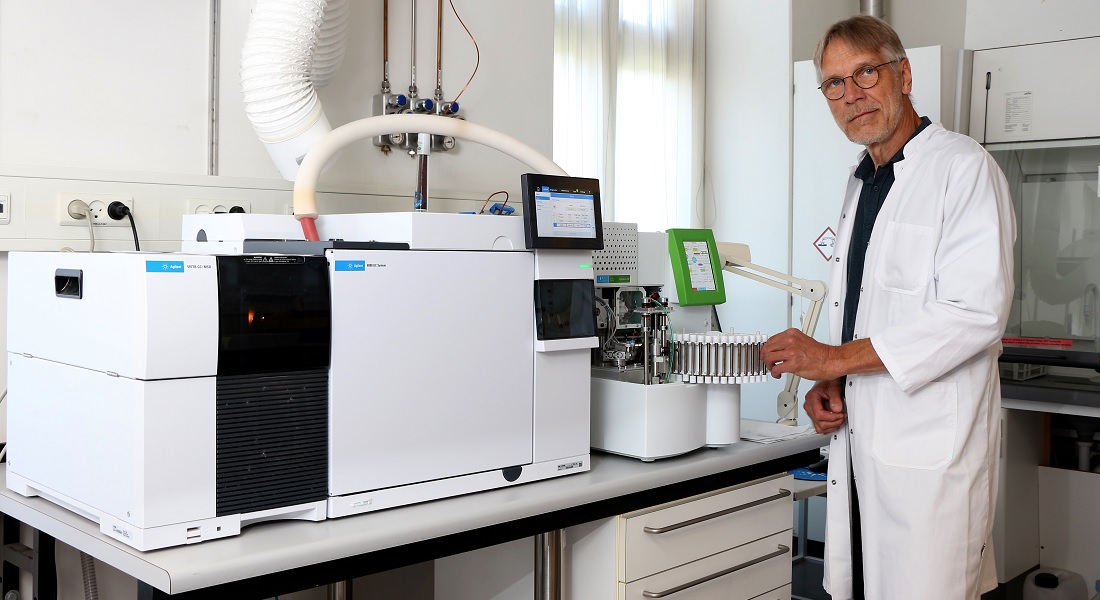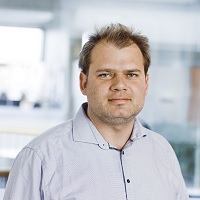Aroma Lab

Description
The aromalab consists of several types of equipment focused on sampling and detecting volatiles.
PTR-ToF-MS
IONICON x2 6000 Proton Transfer Reaction Time of Flight Mass Spectrometer
The PTR-ToF-MS is an online mass spectrometer that can measure dynamically and with high-throughput. With dynamic measurements, we have a Nosespace Air Sampling Extension (N.A.S.E.) that can measure retronasal release during food consumption. For high throughput, the machine is connected to a Gerstel MPS autosampler and uses static headspace injection from 20 ml glass vials.
Nosepace and dynamic analysis:
Is experimental, and typically not a service that we provide, except in research projects.
Headspace injection:
- May be used for static headspace injection to quantify compounds in the headspace of liquid samples.
- May measure below 100 ng/L with optimization of the sample preparation.
- Requires complementation with GC-MS and running authentic standards for targeted analysis.
GC-MS
Two Agilent GC-MS systems coupled to Perkin Elmer Turbomatrix thermal desorbers. The thermal desorbers can transfer volatiles sampled on traps (dynamic headspace sampling, DHS) or Twisters (stir bar sorptive extraction, SBSE) to the GC-MS and can also be used for direct desorption of volatiles from solid samples.
GC-O-MS
An Agilent GC olfactometry system coupled to a Perkin Elmer Turbomatrix thermal desorber. The GC has a heart-cutting (2D GC) system to improve the resolution and detection of target analytes, especially in complex mixtures. The system can also be configured to create so-called ‘in-column’ aroma models for sensory evaluation of mixtures of volatiles extracted from real samples.
Options and requirements for use
- Training of the user is prerequisite for using the equipment, and in some cases only local superusers are allowed to operate the equipment.
- PTR-MS data is analyzed with IONICON Data Analyser (IDA) and given as parts per billion per volume (ppbv) with the exact mass and predicted ion formulas. We recommend using R for data analysis.
- GC-MS data is analyzed with the PARAFAC2-based software PARADISe which enables deconvolution and efficient treatment of large datasets.
- Interpretation and analysis of the results is not included in the fee.
At the start of a collaboration on research with the University of Copenhagen, a cooperation agreement must be drawn up. There are different types of agreements depending on the nature of the cooperation. See more here: collaboration.ku.dk/cooperation-agreements/
The cost of analyses will depend on the nature of the cooperation. The costs will consist of operating costs and salary. For requested research an overhead of 180% on salaries will be added, while it will be lower for projects with shared IPR.
The FOODHAY infrastructure consortium will also be informed that we have collaborated and of the basic outcome.
Sylvester Holt, sylvester.holt@food.ku.dk (mainly PTR-MS)
Mikael Agerlin Petersen, map@food.ku.dk (mainly GC-MS and GC-O)
 Sylvester Holt,
Sylvester Holt,
Tenure Track Assistant Professor
sylvester.holt@food.ku.dk
Mainly PTR-MS

 Mikael Agerlin Petersen,
Mikael Agerlin Petersen,